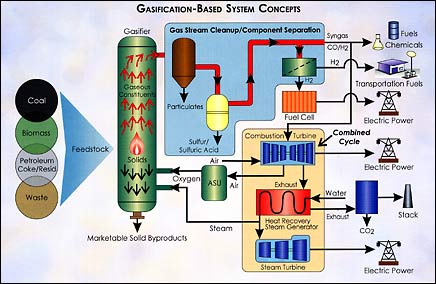Someday, all journalists who report on Climate Change and Energy will not only have relevant Science and Technology training, but they will also be allowed the time to fact-check corporate-sponsored-academic-research Press Releases before being asked to publish articles written around those Press Releases.
I absolutely adore Alok Jha writing for the The Guardian newspaper. He’s young, smart, good-looking, intelligent, and studied Physics at Imperial College, London. He writes well. His heart is clearly in the right place. Some of the things the The Guardian publish with his name under them could, however, be a little more incisive.
Here’s a classic example that seems to be composed straight from a corporate Press Release :-
https://www.guardian.co.uk/environment/2009/nov/15/coal-into-clean-energy-gasification
“Scientists hope to turn coal into clean energy : Alok Jha, green technology correspondent : guardian.co.uk, Sunday 15 November 2009”
Alok, I’ll have to interrupt you right there. No technology yet proposed even hints at the promise that Coal can be made a clean energy. Even the wondrous, still-mythical “Carbon Capture and Storage” has technological limits in its various guises, suggesting a maximum capture of 90% of Carbon Dioxide emissions from Coal-burning in thermal electricity generation plant.
“Millions of tonnes of carbon dioxide could be prevented from entering the atmosphere following the discovery of a way to turn coal, grass or municipal waste more efficiently into clean fuels…”
Again, I’d have to interject : this article is about gasification. Gasification has been around a long, long time. Just ask Wikipedia. And people have been playing with various ways of doing gasification for almost just as long. So, it’s not a “discovery”, only an “improvement” in efficiency, maybe.
Plus, unlike the Carbon Capture and Storage proposed for thermal electricity generation plant, the emissions from burning the resultant vehicle fuel, in millions of vehicles around the world, cannot be captured, so they cannot be called “clean” in any way, unless you are quoting from a corporate Press Release.
It’s true that if you are using gasification to turn grass into vehicle fuel then this is going to be much more clean than doing coal gasification for vehicle fuel. However, since you need other inputs for “grass gasification”, such as the Carbon Dioxide output from Coal-fired power plants, then it takes that greenness right away again.
“The technique has a double benefit for the environment: it provides a use for CO2 that would otherwise escape into the atmosphere and, after the hydrogen is siphoned off from the syngas, the remaining carbon monoxide can be buried safely underground.”
Now you are straying into the territory of the absurd. Yes, Carbon Dioxide added to the process will be taken up into the syngas. But this will not be a permanent sequestration. As soon as the syngas gets burned, the Carbon Dioxide will once more be released, and float off up into the atmosphere and heat us all just that little bit more.
And the Carbon Monoxide that is produced during the new improved gasification process ? That has to be pumped underground ? Where’s the kit to do that on a large scale then ? This is “Carbon Capture and Storage” again, which doesn’t yet exist, really, apart from a few trial projects and some EOR (enhanced oil recovery).
“Castaldi’s results will be published this week in the Journal of Environmental Science & Technology. His team calculated that using CO2 during gasification of a biomass fuel such as beechgrass, in order to make enough biofuel for a fifth of the world’s transport demands, would use 437m tonnes of the greenhouse gas. Preventing that entering the atmosphere would equate to taking 308m vehicles off the road.”
And what happens when the biofuel gets burned (in millions of vehicles around the world) ? Why, the Carbon Dioxide produced from the combustion enters the atmosphere. So no, the Carbon Dioxide is not permanently removed from the active Carbon cycle – where beechgrass grows and dies and more beechgrass grows again.
And the Carbon Dioxide from, say, a coal-fired power plant, that was used as a feedstock to the gasification of the beechgrass – this Carbon is released into the atmosphere, too, when the biofuel is burned.
The Carbon is temporarily diverted from entering the atmosphere. But it gets there in the end.
Gasification using Carbon Dioxide is not a way to permanently capture Carbon Dioxide out of the atmosphere.
“Applied to a modern IGCC (integrated gasification combined cycle) power station, which gasifies coal, this can lead to an efficiency gain of up to 4%. “While that may not sound like much, for a power plant producing 500 megawatts of energy, it is significant,” said Castaldi.”
Yes, making an IGCC power station more efficient is a noble and useful goal. But it doesn’t deal with the problem of the resulting gas emissions.
This level of efficiency gain of 4% would have to be added to the best IGCC efficiency of around 50%. Nobody could claim that this is going to make a huge difference to the inefficiency of burning Coal for power. Plus, it still leaves us with just a slightly less enormous amount of resulting gas emissions. “Slightly less” because the 4% increase in efficiency means we don’t need to use so much Coal.
Alok, you studied the Science of Natural Philosophy (Physics), but you need to now go and study Combustion Engineering, I think.
You can see the Carbon Dioxide (CO2) output in Figure 1 in this brochure from Shell :-
As an exercise for the reader, take a look at the same kinds of convolutions in this other article by the same writer, on the same day :-
https://www.guardian.co.uk/environment/2009/nov/15/clean-coal-power-gasification


